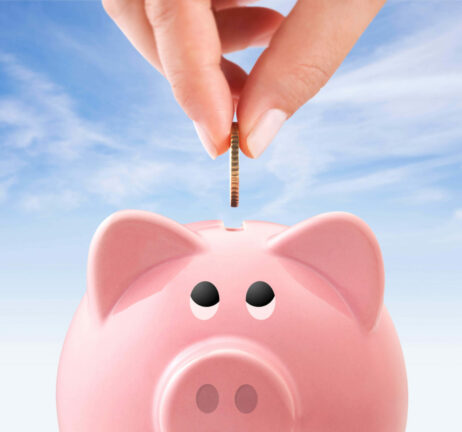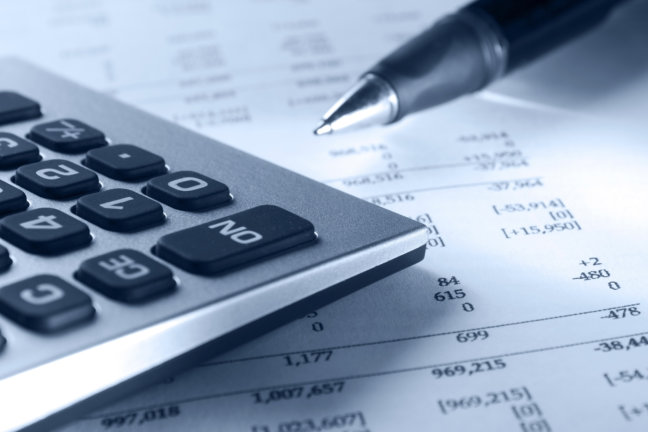The saving rate hit 6.8 this summer, but many Americans still aren’t saving.
Each week, Consolidated Credit searches for financial research that can help you deal with your debt and budget. This week…
The interesting study
This week the Wall Street Journal reported that the Bureau of Economic Analysis revised their personal saving rate for U.S. consumers. A personal saving rate is a measure of how much American households save. It compares household monthly savings amounts to disposable income (income after taxes).
The big result

The personal saving rate for the first quarter of this year more than doubled from the previous estimate. The Bureau of Economic Analysis previously pegged American savings at 3.3%. But they revised that number up to 7.2%.
This is significant because it would mean that average Americans are on target with their savings instead of being behind. Most experts recommend that households should save 5-10% of their disposable income each month. At an average rate of 3.3%, it would mean that most Americans weren’t saving enough. But the new estimate of 7.2% would put most families on target with where they need to be.
The fascinating details
The confusing thing about this revision is that most of the reports about savings in 2018 have been pretty bleak. For instance, Bankrate.com polled U.S. adults in June to ask about emergency savings. Only 29% of those surveyed had emergency savings to cover six months or more of budgeted expenses. In addition, 55% had less than three months saved and almost one in four (23%) had nothing.
- 29% had 6+ months in emergency savings
- 18% had 3-5 months
- 22% had fewer than 3 months
- 23% had none
Oddly though, the same Bankrate survey found that the majority of consumers were at least somewhat comfortable with their savings.
- 24% were very comfortable
- 37% were somewhat comfortable
- 14% were not too comfortable
- 22% were not at all comfortable
But, when you compare those two groups of statistics, you see a big problem. If 23% of Americans have no emergency savings and only 22% are not at all comfortable with their savings, it means that 1% of people surveyed are fine having no financial safety net.
What’s more, this all begs the question of who exactly is saving so much money. If the average personal saving rate is 7.2%, then you would think that more Americans would have a big financial cushion to fall back on. Experts recommend that you should have at least 3-6 months of budgeted expenses saved. If we’re all saving 7.2% of our disposable income each month, then you’d think that the people surveyed by Bankrate would be in a much better position.
“Average rates in finance often don’t present an accurate picture for average Americans,” says Gary Herman, President of Consolidated Credit. “People in high-income brackets that invest a large portion of their income skew results like personal saving rates. So, while the upper 5-10% may be saving more, most Americans may still be struggling to save anything at all.”
What you can do to increase your personal savings rate
“No matter how much you earn, you should always aim to save about five to ten percent of what you take home,” Herman explains. “But when people hear that number, they often get discouraged. If you can’t save five percent, you may feel defeated and just decide to ignore savings altogether. You just leave it for whatever you have left at the end of the month. But this usually means that you end up saving nothing at all.”

Herman says the important thing is to start saving, even if you have to start small.
- Review your budget to cut back expenses as much as possible.
- Divert any funds you free up into savings.
- Make savings a line item in your budget, like a bill you pay yourself each month.
- If possible, set up a recurring transfer from your checking to savings account at a time when it won’t overdraft your account.
- This makes savings automatic, so you don’t have to think about saving money.
“Even if you can only save 1% of what you take home, that gets you started,” Herman encourages. “Then you can gradually increase the amount you save as you work to improve your financial situation.”
For debt management program clients:
Completing your debt management program will free up the money you use to cover the payment. Directly after you complete the program, we recommend turning the money you were using for your DMP payment into your recurring monthly savings payment. Doing so as soon as possible helps you avoid a situation where you’ve already started to use that money to cover other things. This can provide a big boost to your savings and ensure you stay on the right financial track after you graduate!
For people still struggling to find a solution for their debt:
Credit card debt has a way of eating up your income and leaving you with nothing extra to save. In many cases, if you can find a more efficient way to pay off your debt, it can free up funds that you can use for other essentials, like savings. For example, people who qualify for a debt management program reduce their total credit card payments by up to 30-50%. Reducing your payments can free up money so you can balance your budget and start working to achieve real financial stability.